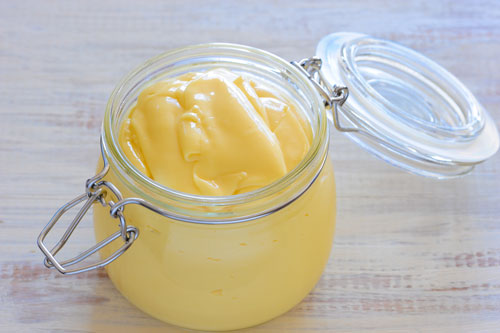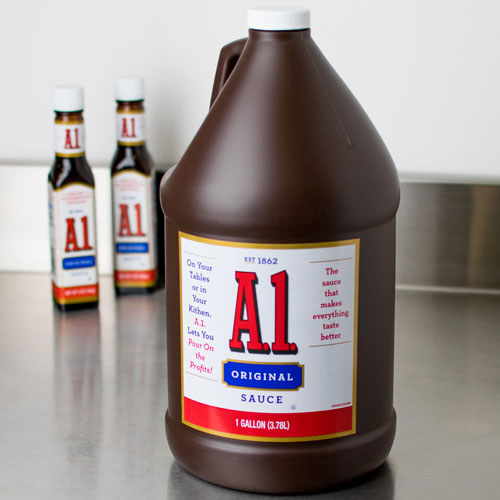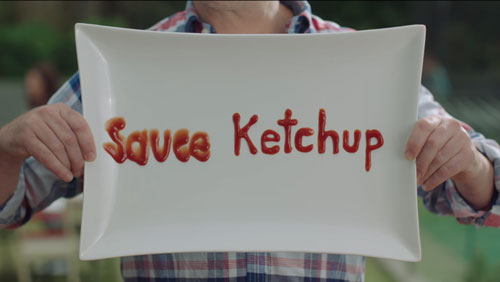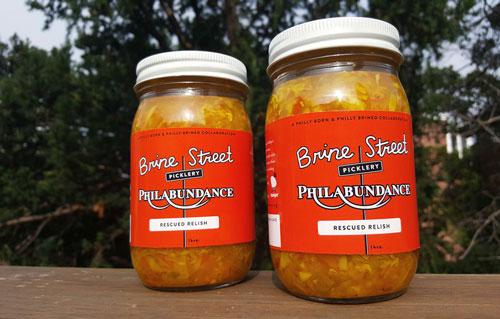What The Hellmann
The hidden stories behind some of the sauces you eat every single day, from a confessed overuser of sauce. You are entitled to a little more, by the way.
Today’s GIF is from a Hellmann’s commercial. You’ve probably never seen this if you live on the West Coast.
Sponsored By … You?
If you find weird or unusual topics like this super-fascinating, the best way to tell us is to give us a nod on Ko-Fi. It helps ensure that we can keep this machine moving, support outside writers, and bring on the tools to support our writing. (Also it’s heartening when someone chips in.)
1932
The year that the parent company of Hellmann’s acquired Best Foods, effectively putting together the two largest mayonnaise makers in the United States. (It should be noted that Richard Hellmann was first, first selling his condiment in 1905.) The companies, for 85 years, have handled the merger by effectively splitting the market; Hellmann’s gets the East Coast, Best Food the West. Now owned by Unilever, the brands have websites that look exactly the same except for the logo, though debate lingers on that one brand of mayonnaise is better than the other.

What came first, the aioli or the mayonnaise? (Wikimedia Commons)
The confusing origins of mayonnaise, a controversial condiment that is the very definition of the word “glop”
Depending on who you ask, mayonnaise anywhere other than a sandwich is either a brilliant idea or the worst crime ever created against food.
(I personally am in the former category. I have no qualms with mayo being used with fries. I’m one of those guys.)
But, whatever the case, we can all agree that mayonnaise is a weird word, one that probably has no small effect on how people feel about the sauce.
So, where did it—and its name—come from? To put it simply, it’s complicated. A good place to start is aioli, which is often considered another way of saying “flavored mayonnaise” today. A version of that sauce, per What’s Cooking America, dates back about 2,000 years, based on writings from the Roman author Pliny the Elder.
Aioli started out as a sauce made of emulsified garlic and olive oil, one that didn’t add eggs until much later. And as a result, a form of aioli came more than 1,500 years before the first rumblings of mayonnaise, though the aioli has gained close associations with the Provence region of France, as well as with parts of Spain.
It’s those parts of Europe that, likewise, became the primary vessels of the creation of mayonnaise. Figuring out where exactly it came to life, is a harder deal. The moment that someone figured out that eggs made the emulsion process much simpler was a major turning point for mayonnaise, but we don’t know who that was or in which country it happened. Just a few of the claims of invention:
A chef invented it. The most common claim, and one put forth initially by the Oxford English Dictionary, was that the chef for Louis-François-Armand de Vignerot du Plessis, the Duke de Richelieu at the time, created the sauce by chance when preparing for a dinner after a victory at Port Mahon, a city on the island of Minorca off of Spain, during the Seven Years War in 1756. The chef reportedly named the sauce “Mahonaise,” after the city where the battle took place. Perhaps he learned about emulsion from the people on the island?
There’s a gap in the history books. Despite the convincing-sounding nature of the above story, many experts in the word space believe that it may not be a true story. Ben Zimmer, a blogger for Thinkmap’s Visual Thesaurus, notes that officials at Oxford’s English Dictionary struggled to fill in the details—variations of “mayonnaise” didn’t get used in French books until more than 50 years after the battle at Port Mahon.
It’s not French, it’s Spanish. Another case, put forth by the food writer Tom Nealon, is that the condiment actually came from Spain in the 17th century (under the name “salsa mahonesa”), then the French brought it with them later on. Nealon’s evidence is a cookbook from 1872 that includes a poem that mentions the invention date as being 1625.
The primary sources put mayonnaise fans who want to dig into the history of the wonder condiment in a tough place. The history is simply inconclusive.
“Mayonnaise, in all likelihood, is more a product of that ancient food nation, made up of speakers of Provencal and Catalan on both sides of the modern borders, than it is of either a France based in Paris or a Spain centered around Madrid,” Bon Appetit wrote of mayonnaise’s history. “But the odds are just as good that a chef in Bayonne added some eggs to his aioli as they are that a chef on Minorca did the same, so, sadly, it’s ultimately impossible to determine which is the true place of mayonaissance.”
Too bad. It was clearly a breakthrough in condiment culture.

A dangerous amount of A1 Sauce. I wonder if people collect containers like these?
Five unusual-but-common ingredients in sauces you probably eat all the time
- Raisins. A1 Sauce, a creation of Henderson William Brand, the personal chef of King George IV, earned a winning reputation long after its creation, after said king gave the sauce an “A1” rating, by somehow tasting like a liquid extension of steak. In fact, one of the key ingredients in the sauce is raisin paste, which is not a product that one can easily purchase in a store. The National Raisin Company, a raisin supplier, sells it to manufacturers in bulk—32 to a pallet, weight 2,560 pounds. (You could, if you feel like making it, just crush some raisins.)
- Anchovies. Unlike most salad dressings, Caesar salad dressing generally has fish in it in many cases, specifically anchovies, something Serious Eats calls a “secret ingredient.” But even if anchovies are not directly used in the recipe, it’s often still there. Why? Well, because in its most common form it has Worcestershire sauce, the fermented liquid that is used as a base in many other sauces. (Here’s a 200-page history of Worcestershire sauce in case you’d like to learn more.) Worcestershire sauce, as you might guess, contains anchovies. And because of its status as a base ingredient, this can prove a problem for people with allergies and can often lead to recalls. Last year, for example, a company called Peddlin’ Rooster faced a FDA recall of 17 different kinds of barbecue sauce because the sauces were made with undeclared soy and anchovies from the Worcestershire sauce and organic ketchup used.
- Rice wine: A key ingredient in Asian cooking, rice wine is heavily used in, among other things, the sauce for General Tso’s chicken, which often uses Shaoxing wine, a common Chinese ingredient. Mirin, a rice wine variant with around 10 percent alcohol, is a staple of Japanese cooking in particular, and is a key ingredient in teriyaki sauce.
- Pickle juice. Obviously, pickles make an appearance in many a condiment, particularly tartar sauce and thousand island dressing, but the briny flavor of pickle juice, specifically, is often used in fry sauce, Utah’s great gift to the culinary world—which isn’t just ketchup and mayonnaise. (That said, a representative of the fast food chain Arctic Circle told Eater last year that the company, who shares a direct lineage with fry sauce inventor Don Carlos Edwards, “never ever” used pickle juice.) Pickle juice is often used as a way to spice up a recipe for which vinegar is required.
- Melted butter. Dr. William Kitchener, perhaps one of the unsung heroes of British culture, sung the praises of melted butter as “the foundation of all our English sauces.” But while we may not think of melted butter as much of a condiment these days, it remains a key ingredient of one sauce that lots of people commonly eat: Buffalo wing sauce. The butter (or margarine in the case of the bottled version) tamps down the heat of the pepper sauce a bit and thickens it up.

Exhibit A in Heinz’s case against tomato sauce. (YouTube screenshot)
Why Heinz is waging a battle to sell Australia on ketchup instead of “tomato sauce”
Earlier this year, when I wrote a fairly detailed article on lemon squeeze bottles, a modest debate cropped up in the comment thread regarding the difference between “tomato sauce” and “ketchup,” after it was pointed out that New Zealand had gained a reputation for putting plastic tomato bottles on their kitchen tables.
One reader insisted that ketchup and tomato sauce were two different things. Broken down, the difference between the two condiments, besides location, is relatively modest. Ketchup, at least in its American form, generally has vinegar. Tomato sauce, which is found in New Zealand, Australia, and South Africa, often does as well—though you’ll find it listed as acetic acid and water, two ingredients that, together, are the two main elements of vinegar. So the main difference appears to involve the splitting of hairs.
What’s fascinating about this topic is how much pride seems to be taken in each respective country’s tomato-condiment variant, particularly in New Zealand, where the brand Wattie’s is so loved that there’s a commercial dedicated to the sauce, in which a man sings a song titled, “You’ll Never Be a Kiwi Till You Love Our Wattie’s Sauce.”
Wattie’s is owned by Heinz, and has been since 1992, so it’s in on the deal.
More interesting, however, is the state of affairs in Australia. Tomato sauce has gained a high level of cultural currency in the country, but despite this, Heinz is trying to make inroads into the country with ketchup, under its American name, while also selling a line of tomato sauce called Big Red.
The company has sold ketchup to the Australian market for nearly 100 years, but has struggled to find an easy way to the level of mass success that makes the brand the juggernaut it is in the U.S. Ketchup, for decades, was seen as a niche product in Australia compared to tomato sauce, and Heinz has at times struggled to make the case to consumers that it’s a worthy alternative.
And yes, it’s tried, in 1991, per the industry periodical Food Australia, Heinz launched a cookbook in an effort to tell the public that it was different from tomato sauce.
“Heinz Tomato Ketchup Marketing Manager Martin Dowling said that Australians need to be educated that tomato ketchup is different, it is not tomato sauce with an American name,” the article stated.
(The piece also pointed out that American-style ketchup had just 3.4 percent of the market at the time, an increase from 2 percent, but still totally anemic compared to how Heinz ketchup does in other markets.)
Heinz’s efforts to sell the Australian public on ketchup have at times been seen as something of an affront on Australian identity, especially as, starting in 2010, the company started advertising the ketchup on television.
Famed Australian entrepreneur Dick Smith, whose company makes the competing OzEsauce, was among the more prominent critics of the move.
“They don’t give a stuff about Australian culture or our way of life,” he told The Sunday Telegraph. “They’ve basically said if we have one common label and … call it ketchup all around the world, that’s the best way we can make money.”
And more recently, the company has started to make the case against tomato sauce by having a celebrity chef point out that it’s thinner than ketchup, using the kind of example Americans might recognize from laundry detergent commercials.
Additionally, it’s actually a throwback for Heinz, which has used the thickness of its ketchup as a selling point in the past.
Anyway, the company by no means struggles in Australia; its most popular products in the region, under different brands, include canned beans and beetroot.
So I guess the question is this: Why bother? They already have a huge chunk of the market locked up anyway. Just not with the vinegary tomato foodstuff.
So, I admit to be game for most condiments and sauces, which very much define what makes a good meal for me.
But even I have my limits. (I can’t get behind coleslaw, and no French dressing.) Recently, Drexel University researchers announced the creation of a form of relish made from food that would otherwise be put straight into the trash. The condiment changes based on what isn’t going into the trash, meaning that no two tastes will be the same.

The attempt at “upcycling,” which bases the condiment on a regional recipe for Pennsylvania Dutch chow chow, appears to have seen some positive results.
“There is an economic, environmental and cultural argument for keeping food, when possible, as food and not trash,” Drexel professor Jonathan Deutsch, PhD said in a news release. “Converting surplus foods into value-added products will feed people, create opportunities for employment, entrepreneurship and lower the environmental impact of wasted resources.”
Is this the future for condiments? We can’t be sure. But certainly, some people will use it just by sheer force of habit.
Correction: An earlier version of this article misstated the vinegar content of tomato sauce in comparison to ketchup. We regret the error.
:format(jpeg)/2017/12/tedium121417.gif)
/2017/12/tedium121417.gif)


/uploads/ernie_crop.jpg)